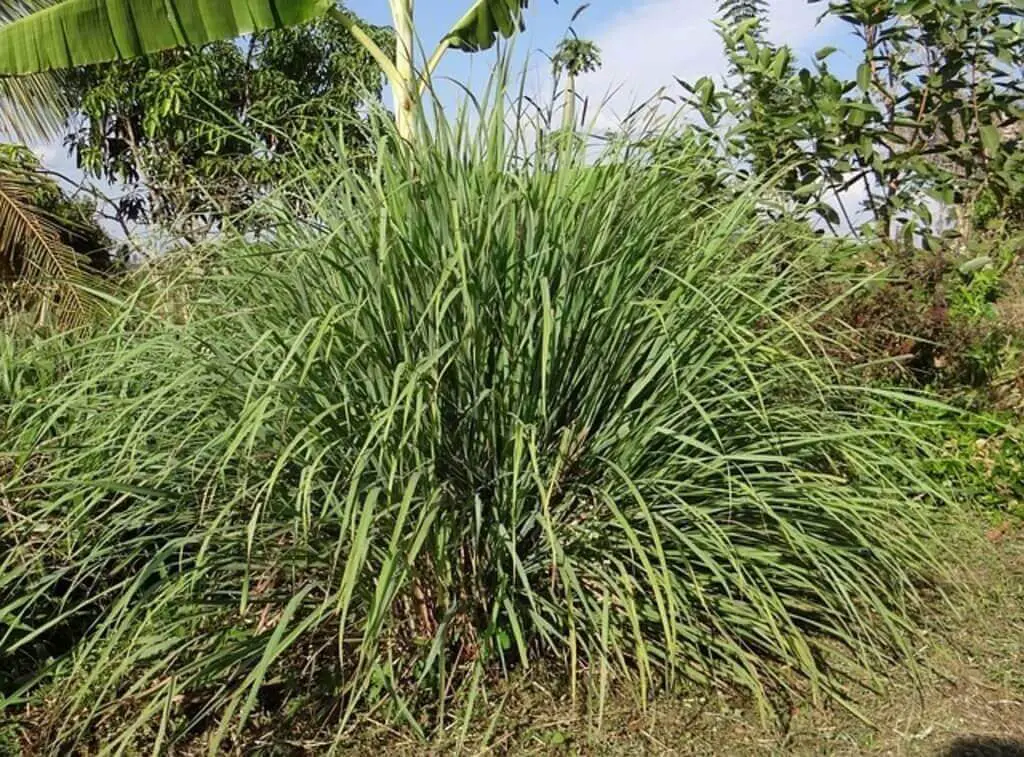50 Interesting Facts About Lemongrass (Photos & Info)
Lemongrass is a perennial plant in the family Poaceae. The lemongrass grows best in tropical and subtropical climates. Lemongrass has been used for centuries as a herbal remedy, culinary ingredient, folk medicine, natural insect repellent, and even a beverage.
In this article, we will explore 50 interesting facts about lemongrass with photos of identification to help you learn more about it!
Overview
- Order: Poales
- Family: Poaceae (formerly Gramineae)
- Subfamily: Panicoideae
- Genus: Cymbopogon
- Supertribe: Andropogonodae
- Tribe: Andropogoneae
- Subtribe: Andropogoninae
- Binomial Name: Cymbopogon schoenanthus
- Scientific Name: Cymbopogon citratus
- Plant Type: Perennial herb.
- Flower Color: White
- Propagation: Seeds, cuttings, division and transplants.
- Plant Height: 72″ inches (6 feet)
- Plant Spread: 30″ inches.
- Zones: 9-10.
- Harvest Period: est.100 days.
Plant Description
Lemongrass is an evergreen herb plant that is a tall and erect, aromatic and tropical plant. Lemongrass plant has thin blades ranging of green, blue to gold, the edges are sharp, with tiny white flowers on the stalk.
At first glance it would be easy to mistake it as a weed as it’s rather rampant and spreads because of this. This plant can grow to be six feet tall and eighteen inches wide. It takes 12 months for this tropical, flowering plant to produce seeds that will later grow into new plants.
Interesting Facts About Lemongrass
- Lemongrass is a type of aromatic tropical grass used primarily for culinary uses.
- Lemongrass is native to southern Asia, Australia and Africa, and has been used throughout history as a culinary herb.
- In ancient times, lemongrass was used in perfumes, incense, and medicine.
- Throughout history lemongrass has been proven helpful with health issues such as respiratory problems, anemia, and arthritis.
- Lemongrass does not actually contain any lemon/citrus oil; the aroma comes from terpenoids such as citral or citronellol present in.
- Lemongrass is widely known for its ability to repel mosquitoes; it is also an antiseptic with antibacterial, antiviral, and antifungal properties.
- It has been linked to relieving pain associated with headaches, muscle aches, menstrual cramps, and rheumatism.
- Lemongrass is closely related botanically to citronella grass and ginger.
- In India, lemongrass has been used as a natural remedy for many years.
- In traditional Chinese medicine it is used as a medicinal herb for the treatment of fever, headaches, sunburns, nausea, and pms.
- Lemongrass may combat hypertension.
- It is primarily used as an anti-inflammatory remedy, but it is also known to be effective for treating asthma and bronchitis.
- The essential oils of lemongrass are antimicrobial, they inhibit the growth of bacteria, particularly Staphylococcus aureus and Candida albicans.
- Lemongrass essential oil has been shown to decrease the number of bacterial strains present in the nasal cavity.
- Lemongrass helps to support normal gastrointestinal function and encourages the growth of beneficial bacteria in the intestines.
- It is a powerful remedy for bloating and can reduce gas and flatulence.
- It soothes and tones the digestive tract and helps to regulate intestinal functions & & promote healthy bowel movements.
- Lemongrass can help to prevent viral infections, control high blood pressure, fight inflammation, lower cholesterol levels, treat stomach ulcers and boost the immune system.
- Lemongrass can be used in either fresh or dried form, though fresher leaves yield a stronger flavor.
- Lemongrass is a plant that grows from a shallow, rhizomes-based root structure.
- It produces stems around 2 feet long and has a thick, fleshy stem base.
- Lemongrass has been used as a herbal remedy for thousands of years from ancient China to the present day across many cultures.
- The plant is cylindrical at the base and tapers into a long, slender spike up to 18 inches high.
- Its leaves are pinnate, which means they have multiple leaflets which appear on two sides of each leaf stem or petiole.
- Lemongrass is a perennial herb that can grow up to 6 feet high and has a limited lifespan, living only 4 years on average under optimal growing conditions.
- Lemongrass can be found growing in tropical and subtropical regions throughout the world including: South Asia, Southeast Asia, West Indies, Central America, Cuba, Mexico and parts of Africa.
- Lemongrass is a source of citral and zingerone.
- The leaves and stem contain terpenoids such as citronellal, geraniol, linalool, limonene and / or 2- / 3-hydroxy-4-methoxybenzaldehyde which give its distinctive smell and flavor.
- Lemongrass is one of the main ingredients used to make lemongrass essential oil (also known as lemongrass oil or LEO), which is commonly used in Asian foods and beverages.
- Lemongrass is also used as an essential oil in cleaning products, flavoring foods and beverages like tea, cleaning products and perfumes.
- Lemongrass is often used for its cooling effect on the body. It can be taken orally or applied topically to relieve muscle aches and pains.
- The plant has traditionally been used during certain religious rites for purification, prosperity, memory loss and other uses to cause good luck for upcoming events. Its scent is believed to drive away negative energy and facilitate professional success.
- The roots of lemongrass traditionally have been used in traditional Chinese medicine (TCM) for over 3000 years to promote the immune system, especially the lymphatic system.
- The Poaceae family has 780 genera and 12,000 species which are distributed all over the world.
- It was formerly known as being from the Gramineae family of grasses.
Related Article: How to grow Lemongrass from seed?







